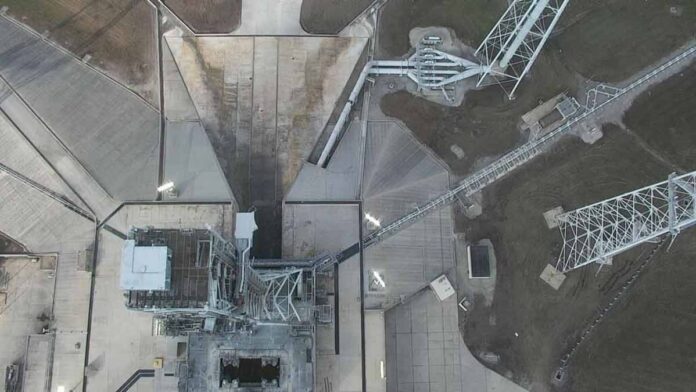A scorched platform, fried cameras, broken pipes, and a busted elevator were among the casualties of NASA’s SLS rocket launch last week. The Kennedy Space Center’s Mobile Launcher 1 and Launch Complex 39B will need to be repaired. But NASA says they will be ready for the next Artemis mission.
The Space Launch System, or SLS, launched early Wednesday, November 16. It was carrying the Orion capsule on a 25.5-day journey to the Moon and back. NASA has stated that the launch went off without a hitch. According to Mike Sarafin, Artemis 1 mission manager, preliminary data from the flight show that SLS performed as well as.
According to Sarafin, SLS’s performance deviations were less than 0.3% across the board. And the rocket missed NASA’s target orbital insertion by only 3 nautical miles. He reminded reporters that SLS used 8.8 million pounds of thrust at liftoff. And that the deviation of 7 feet per second is still “remarkable” in terms of precision. “The results were incredible,” he added.
Photojournalists at Kennedy Space Center have been told not to photograph Launch Complex 39B for security reasons. (i.e., ITAR restrictions; NASA says photos of the now-exposed umbilical plates would constitute a security violation). And possibly because NASA does not want to publicise the fact that its launch tower has been damaged.
The mission management team appeared unfazed, and it’s entirely possible that the damage is minor or manageable. NASA is doing everything it can to minimise any harm caused by its new pride and joy. Opinions on Twitter varied, with some saying the damage is far worse than NASA is willing to admit. While others say it’s not a big deal and is all part of the engineering process. Surprises are to be expected when launching the world’s most powerful rocket. But if the damage is worse than NASA claims, they should admit it.
Back at the lunar ranch, the unmanned Orion capsule is still doing its thing. Yesterday, the spacecraft flew close to the Moon as it steadily moves into a distant retrograde orbit around the Moon. On December 11, Orion will complete its 25.5-day mission by attempting an atmospheric reentry and splashdown in the Pacific Ocean. Artemis 1 is the first in a series of missions that NASA hopes will establish a permanent human presence in the lunar environment.

